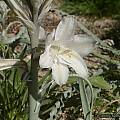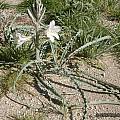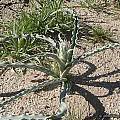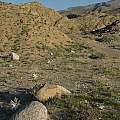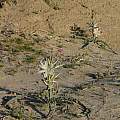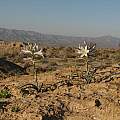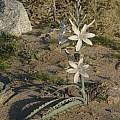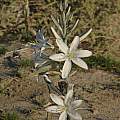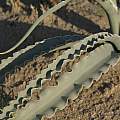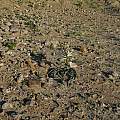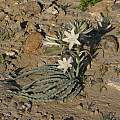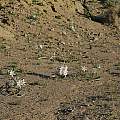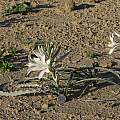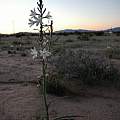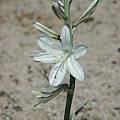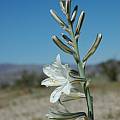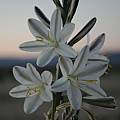Hesperocallis is a monotypic genus with the single species, Hesperocallis undulata. Originally considered to belong to Liliaceae, APG II included it in its own family, Hesperocallidaceae or in the Agavoideae subfamily of a broader Asparagaceae according to APG III. It is an erect perennial with onion odor from deep seated, tunicated bulbs, with glaucous leaves and straight stout stems. Found in sandy flats of creosote brush desert scrub in some of the most arid regions of North America (deserts of southeastern California, Baja California and Sonora, Mexico, and southwesten Arizona), it flowers only after infrequent rains. Flowers are large, white with a silver or green midstripe and are fragrant, especially at night. Because this "Desert Lily" is very beautiful, bulb fanciers would love to bring it into horticulture. The seeds germinate easily in winter when grown in a well-drained mix. It is important to keep the seedlings in growth and not allow them to go dormant. Once the seedlings go dormant, getting them to break dormancy is a challenge. Even a few who have gotten them to come into growth again have not had success in getting plants to bloom. How to grow this plant is a recurring topic of the PBS list see here. If anyone ever gets it to bloom in cultivation and reports how they did it, we will add your techniques.
Hesperocallis undulata These pictures were taken January in the scenic area between Salton Sea and Borrego Springs, probably less than 10 miles west of the Salton Sea. Photos 1-3 were taken by Jamie Boothe.
The photos below were taken by Nhu Nguyen in late March 2010 in Anza-Borrego Desert State Park. Seasonal weather averages for this area is (night/day) 41-70 °F (5C-21C) from December to February, 70-100 °F (21-37 °C) in June and 75-105 °F (24-45 °C) in July-September. Regardless of the time of year, the day-night fluctuation is usually around 30 degrees F (16 degrees C). These temperature fluctuations could be a clue to successfully growing this species.
The following photos were taken by John Longanecker April 1, 2005 near Baker in the Mojave Desert preserve and near 29 Palms, CA. Note the variation in the grey streak on the petals.
